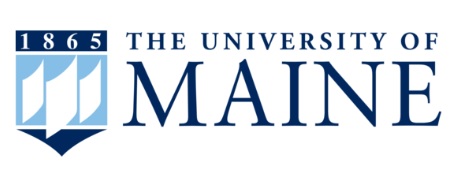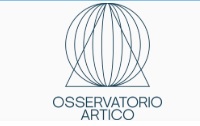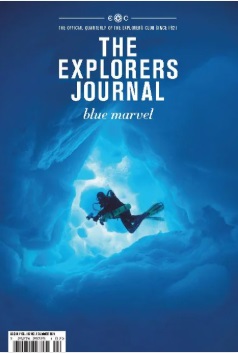SOS ARCTIC 2024. Greenland South-North traverse
SOS ARCTIC 2024. Greenland South-North traverse covered a total of 1,500 km from Narsaq to Upernavik in just 22 days. The new Windsled was the largest and heaviest to date, capable of transporting 8 people and carrying 3 tons of cargo.
On May 6, 2024, a new Windsled expedition began, with an international team led by renowned explorer Ramon Larramendi embarking on a challenging journey across Greenland’s ice cap from south to north.
The team of scientific experts included three Greenlanders (Jens Jacob Simonsens, Aka Simonsens, and Bo Kleffel), two Italians (Roberto de Pieri and Enrico Gianoli), a Venezuelan (Marcus Tobia), and a Spaniard (Felipe Ruiz de Gauna). They traversed a total of 1,500 km from Narsaq to Upernavik in just 22 days.
This mission was successfully achieved with this main goals:
- Push the maximum load capacity of this innovative vehicle. (3 Tons)
- Support five scientific research projects.
- Establish a new route that could serve as a logistical base for future expeditions in northern Greenland.
The new Windsled, which increased scientific potential, consisted of a convoy of four articulated segments capable of carrying eight crew members and approximately three tons of cargo—an increase from the 2.2 tons of previous versions. Additionally, for the first time, it featured an advanced electrification system based on solar panels.
Among the scientific projects carried out during this expedition were the following:
- MICROAIRPOLAR Project. Microorganism studies in the air. Antonio Quesada, Ana Justel, Autonomous University of Madrid, Spain.
- Monitoring and detection of PFAS. Paul A. Mayewski, Climate Change Institute (CCI), University of Maine, USA.
- PIONEER Project (EU funded). Ozone, nitrogen dioxide, and particulate matter measures with an advanced low cost portable sensing apparatus. Federico Dallo, CNR Institute of Polar Sciences, Italy.
4.Impurities in snow: black carbon, mineral powder, microplastics. J. Ignacio Lopez Moreno, Pyrenean Institute of Ecology-Higher Council of Scientific Research Spain, IPE-CSIC.
- Snow sample analysis for:
- – trace metals, mercury and emerging contaminants identification (CEAC)
- – the study of microbiological features, including abundance and diversity of cold-adapted prokaryotic communities.
Nicoletta Ademollo, Warren Cairns, Angelina Lo Giudice, CNR Institute of Polar Sciences, Italy
The last achievement before concluding the expedition was mapping a new logistical route that will serve as a reference for future scientific explorations. Upernavik, the final destination, will become a key point for upcoming Windsled journeys in northern Greenland.
On June 9, 2024, the expedition concluded, laying the groundwork for a promising future.
The Team

Ramón Larramendi
Project Leader
Spain, Greenland

Jens Jacob Simonsen
Captain, Explorer, Polar Logistics
Greenland

Marcus Tobia
Mountaineer, Explorer
Venezuela

Aka Simonsen
Arctic Guide, Archeologist
Greenland

Roberto de Pieri
Electrical Engineer
Italy

Bo Kleffel
Polar Logistics
Greenland

Felipe Ruiz de Gauna
Mountaineer, Camera
Spain

Enrico Gianoli
Greenland Guide
Italy
Diary
Bellow you’ll find the personal diary of Enrico Gianoli, an experienced guide who joined the SOS ARCTIC 2024 Expedition. In it, he shares the challenges and triumphs of the expedition, including extreme weather conditions, changing winds and the need for constant teamwork.
You can also find the diary in italian in the following link: https://www.osservatorioartico.it/windsled-2024/
Osservatorio Artico is an italian leading platform for Arctic news and research.
As well, don’t miss out: download and discover everything in one place!
(English version)

Gallery
Press
Bellow you could find some of the most notables news about the SOS ARCTIC Expedition. 2024.
Check out the pdf and find more relevant news about this expedition !

Scientific projects
MicroAirPolar -Airborne Microbiology Survey/ WS Greenland South-North Expedition 2024
Leads: Dr. Ana Justel and Dr. Antonio Quesada (Universidad Autónoma de Madrid, Spain)
During the 2024 WindSled traverse, MicroAirPolar collected airborne microorganisms along a South-North transect of the western Greenland Ice Sheet. The windsled team used air collectors on the sled and at planned stops, applied clean handling with field blanks, sealed and cold-stored filters, and then delivered them to collaborating laboratories for analysis of airborne microbial communities and their spatial patterns. The 2024 dataset is designed to integrate with concurrent atmospheric and snow-chemistry measurements to link aerosol transport with deposition at the snow–air interface.
Continuity on WindSled
MicroAirPolar has a multi-year track record on the platform: GR 2016, GR 2017, ANT 2018/19, GR 2022, and GR 2024.
Monitoring and Detection of PFAS/ WS Greenland South-North Expedition 2024
Leads: Professor Paul A. Mayewski and Ligia Naveira, Ph.D. (Climate Change Institute, University of Maine, USA)
During the 2024 WindSled traverse, the team established a south–north transect along the western Greenland Ice Sheet as a baseline for per- and polyfluoroalkyl substances (PFAS). Surface snow and shallow firn were collected at planned waypoints using clean-handling protocols, field blanks, and cold storage to minimize contamination. Samples were transferred to CCI for LC–MS/MS analysis targeting a representative suite of PFAS classes and chain lengths.
This baseline resolves first-order spatial structure -south–north gradients, elevation effects, and route-scale variability -against which subsequent WindSled campaigns can compare year-to-year change. It also refines future sampling (site spacing, depths, replication) and anchors integration with meteorological context to interpret atmospheric delivery and deposition to the snowpack. Together, these elements inaugurate a robust, multi-year PFAS record for western Greenland in partnership with the WindSled Program.
Snow Impurities and Microplastics Survey/ WS Greenland South-North Expedition 2024
This project, led by Juan I. López-Moreno (Pyrenean Institute of Ecology, CSIC), surveys impurities and microplastics in Greenland snow along the WindSled route. Approximately ten evenly spaced sampling sites are selected; at each site, two 1-liter snow samples are taken -from the surface and from roughly one meter in depth -using aluminum bottles to avoid plastic contamination. Samples are melted under controlled conditions in Upernavik and immediately filtered with a compact field unit supplied by IPE-CSIC. The expedition returns only the dried filters (and, where appropriate, a few small water aliquots) for laboratory analysis, minimizing transported liquid and the risk of contamination. In the lab, filters are examined to quantify and characterize microplastic particles (e.g., fibers and fragments) and other insoluble impurities. Results will be evaluated across depth and distance to reveal vertical and spatial patterns in snow contamination along the traverse. The dataset will contribute to understanding pollutant transport and deposition in Arctic environments and inform future, comparable studies across the Northern Hemisphere.
Italian science activities during SOS (Sustainable Observing Science) Arctic 2024
The activities that have been thought out and programmed take strongly into account on the one hand the limited timeframes that were available to plan and prepare them, and on the other the strong logistical constraints that the shipment and the conditions pose. Going beyond what is proposed will require careful analysis to identify appropriate technical solutions, but it would allow us to extract all the potential that the Windsled platform could offer in terms of environmental monitoring on the Greenland Plateau.
The plan moves along two distinct lines, although potentially integrated in the future with the addition of further analyses and measures:
A – Snow sampling to study pollutants and prokaryotic populations
B – Evaluation of background air pollution conditions in terms of aerosols and imported reactive gases such as ozone and NO2

Snow samples









